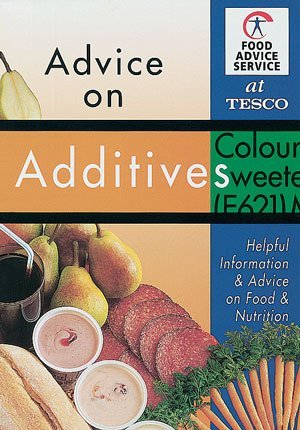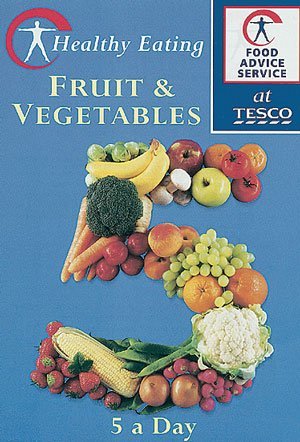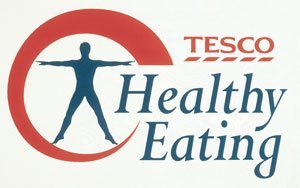It is the ability to satisfy customers that marks the difference between a successful and an unsuccessful organisation. That is why some children’s nurseries have a huge demand for places, while others have falling roles. It is why some supermarkets have people crowding the aisles whereas others are practically empty. This ability to satisfy customers boils down to successful marketing.
The Chartered Institute of Marketing uses the following definition of marketing:
‘Marketing is the management process responsible for identifying, anticipating and satisfying consumer requirements profitably.’
There are a number of key components in this definition:
- Identifying – involves asking and finding out the answers to questions such as: “How do we find out what the consumer’s requirements are?” and “How do we keep in touch with their thoughts, feelings and perceptions about our goods or service?”
- Anticipating – is essential because consumer requirements change all the time. For example, as consumers’ living standards increase, they may seek a greater variety of foods e.g. the replacement of standard fare for exotic recipe dishes. Anticipation involves looking at the future as well as at the present. What will be ‘The Next Best Thing’ that people will require tomorrow?
- Satisfying – involves meeting the requirements of consumers. Consumers seek particular benefits. They want the right goods, at the right price, at the right time and in the right place.
- Profitability – because successful organisations need to be able to build for the future. An organisation that fails to make a profit will have nothing to plough back. Without the resources to put into ongoing marketing activities, it will not be able to identify, anticipate or satisfy consumer requirements.
This case study, therefore, focuses on how Tesco has identified and anticipated changes in lifestyles in this country and how these impact on new requirements for healthy eating. It shows how Tesco has developed a highly successful “Healthy Eating” brand, which has enabled the company to satisfy its customers and generate profits.
Healthy Eating at Tesco
The Tesco Healthy Eating Initiative was launched in 1985. The aim was to provide customers with information on health and nutrition and also a range of foods made especially for a healthier diet. As Britain’s leading food retailer, Tesco is in a unique position to communicate with customers and receive feedback on current attitudes and needs. Where better to provide people with information about the food that they eat than where they do their shopping.
Research
The decision of Tesco to get involved in Healthy Eating was brought about by two things:
- The extensive media coverage of reports into diet and eating patterns in the UK in the early 1980s. These reports established a link between poor diet and ill health and set out that:
‘If people are to change their diet then they must be informed of the need for change and of how the change may be implemented and be given the necessary enabling information.’
- Tesco had been aware of a steady increase in the number of enquiries it had been getting from customers about the nutritional values of its products and also requests from people wishing to make changes to their diet.
These two triggers led to the commissioning by Tesco of a Gallup Poll, to try and ascertain exactly what people were concerned about and what information they would like. Gallup is a major UK independent market research group. Gallup carried out research on behalf of Tesco in 1984 and 1987. It was based on street interviews with a representative nationwide sample of housewives. The sorts of questions asked were:
Q.1. How concerned are you about eating healthily?
Very concerned.
Fairly concerned.
Not very concerned.
Not at all concerned.
Don’t know.
Q.2. Which three aspects of your health concern you most from the list below?
General fitness.
Being overweight.
Blood pressure.
Heart disease.
Cancer.
Examples of the results that were extracted from the market research were that:
- Concern with eating healthily is high (4 in 5 consumers are “very” or “fairly concerned”) and this tends to be highest amongst 25-54 year olds and the higher social grades.
- In March 1987, respondents appeared more concerned with general health issues than with specific illnesses.
- An increasing number of consumers were looking at information given on product labels.
- More information was required about product additives.
Meeting customer needs
The Gallup Poll convinced Tesco that it needed to focus its attention on four main areas:
- Providing Nutrition information on the labels of all its own brand products.
- Reviewing the use of additives in the own brand range with a view to removing any that could be shown unnecessary.
- Providing literature in the form of leaflets on healthy eating to help people understand the issues and give them enough information to make reasoned choices about the food they were buying.
- Providing products that people need to eat a healthy diet and in certain areas, providing healthier alternatives to standard products.

Tesco had nutrition information on all its own-brand products by 1987 and was the first retailer to do so. Today this follows the European Union required format. Tesco established a ‘Hit List’ of additives to ensure that its products did not contain contentious additives such as Azo Dyes.
Leaflets have been produced on a wide range of subjects, from facts about healthy eating to recipe cards incorporating the main healthy eating messages with fun, easy recipes. Perhaps most importantly, Tesco developed a logo system to make it easy for customers to identify products that provide a ‘Healthy Eating’ choice.
The ‘Healthy Eating’ Brand
In order to anticipate change, organisations need to have an antenna that is highly sensitive to changes taking place in the buying population – for example, what is happening to the age structure of this population, how our tastes and preferences alter as lifestyles change, what is happening to incomes and buying patterns, and so on. Market research is therefore the antenna of the organisation.
The Tesco antenna enabled it to understand that consumers were seeking healthier lifestyles, were more concerned with personal fitness and therefore wanted to purchase those foods that would best provide them with these benefits. Using the results of their 1984 and 1987 research, Tesco went on to develop ‘Healthy Eating’ logos for ‘naturally’ healthy products such as fruit, vegetables, pasta and rice.
Tesco also decided to develop new foods with manufacturers, that was to be produced to different recipes so that it could create a new sub-brand, the ‘Healthy Eating’ brand. Today this brand consists of over 200 products with a combined turnover of £250 million. Dairy products such as skimmed and semi-skimmed milk and half fat cheeses were the first products to be labelled. These already existed and just needed repackaging. Next, products such as half-fat spreads and yoghurts were moved over to the brand. Ready Meals lent themselves to having their recipes modified and so were the next to be developed.
Continuous Improvement
Having established yourself as the market leader in a particular line, there should be no room for resting on your laurels. In a competitive marketplace, rivals will continually copy your best ideas. The secret to success, therefore, lies in continuous improvement. In 1994, with the 10-year anniversary of its ‘Healthy Eating Initiative’ approaching, Tesco decided to carry out a major review. Consumer research was again used to assess what changes if any were required.
The specific issues that the research sought to investigate were?
- To identify who the ‘Healthy’ customers are and who are rejectors of ‘Healthy’ products, including men, women and children. Were these customer profiles the same for the Tesco ‘Healthy Eating’ brand?
- To determine what customers expect/want from the ‘Healthy Eating’ brand?
- To determine whether the ‘Healthy Eating’ brand is appropriate for all these product areas or whether it might have been more sensible to position some of these products in a slightly different segment, e.g. ‘diet’ or ‘lite.’
- To find out what customers’ perceptions were of the ‘Healthy Eating’ brand and how it compared with competing brands.
- To find out whether consumers were willing to trade off taste for a healthier product.
- To see if customers would be prepared to pay more for a healthier alternative.
These were just some of the areas for investigation. The student can see that the research has moved up a gear in terms of sophistication, in the same way that consumers are increasingly making more sophisticated and educated choices about healthy eating. Today, healthy eating is not just one generic market segment. The segment needs to be further subdivided and understood.
Results of the research
Some of the results of the research were that consumers feel that a ‘balanced diet’ includes:
1. Inherently healthy ingredients and products. These include natural ingredients that are seen to be healthy, basic, traditional foods which are considered natural and wholesome, such as:
- fresh fruit and vegetables
- wholemeal bread
- pasta, rice, pulses and potatoes
- white meat
- fish
- water
- fresh fruit juice
- cereals
- frozen vegetables
- organic fresh foods
- milk.
2. Products that have been made healthy. These are products that consumers feel sufficiently positive to categorise as being healthy because sufficient change has been made to both the product and its image, such as:
- low-fat spread
- yogurt
- cheeses
- semi-skimmed milk
- healthy prepared ready meals and meal centres
- trimmed meat and poultry.
3. Products that had been made healthier. These are products that in their standard form appear unhealthy but have been made healthier through changes to the recipe and preparation methods. These products would still not be perceived as inherently healthy, but can contribute to an improvement in the diet, such as:
- low-fat versions of sausages
- mayonnaise
- crisps
- chips
- ice cream, etc.

In the third category, it is sometimes possible to move the product towards healthy eating by the inclusion of a positive proposition, such as low-fat burgers made with extra lean mince. In seeking information about healthy eating, consumers feel that sources are often contradictory. However, they feel that the most reliable sources of information include doctors, dieticians, nutritionists, The Health Education Authority, The Heart Foundation and Government sources. Of the retailers, Tesco and Sainsbury were universally the most highly regarded in the provision of healthy foods.
Consumer requirements of retailers are that they should provide a range of choices, to the expected standards dictated by the authoritative sources and changing consumer perceptions. Such a choice enables the achievement of an individual household’s own concept of a ‘Balanced Diet’ without pressure. Consumers felt that the role of communicating information and providing an appropriate product portfolio must be achieved without being perceived to overclaim or jump on the healthy eating bandwagon. In this context, the fact that the Tesco “Healthy Eating” brand was almost 10 years old generated an extremely positive reaction from respondents. It added credibility in terms of the reasons behind the original development of the brand.
Relaunching the Initiative in 1995
The ‘Healthy Eating Initiative’ was therefore relaunched in June 1995, having achieved the following:
- A quality range of products with the breadth and depth to satisfy consumer requirements, which are offered as a choice within similar product ranges. “Healthy Eating” products are not all merchandised together. Instead, they appear as part of a parent range offer.
- A range of products which meet the required criteria and are clearly understood by consumers.
- A consistent pricing structure. Wherever possible, healthy eating products are kept at the same price as standard products unless there is a real cost implication, e.g. skinless chicken is more expensive than chicken with the skin on, but healthy eating yoghurts are the same price as standard ones.
- A pack design which clearly communicates food values and product benefits, as well as being easily identifiable.
- A merchandising policy which helps the customer find the products and maximise sales. The Healthy products are usually merchandised next to the standard version or next to the brand leader if there is one in the healthy sector, e.g. “Healthy Eating” ready meals are next to Lean Cuisine and Weight Watchers meals. Sometimes they are put on an end for a special promotion.
The brand was redesigned to give a much stronger ‘on pack’ presence whilst still retaining the ‘Man.’ The criteria for meeting ‘Healthy Eating’ requirements were also made stricter, but the scope of the Brand increased by stretching brand imagery for ‘healthier’ products, e.g. ‘reduced fat’ rather than ‘half fat.’
The strength of the brand

At the start of this case, we said that successful marketing involved identifying and anticipating consumer requirements, in order to satisfy these requirements and to make a profit. In each of these areas, the Tesco ‘Healthy Eating’ brand has been a success. This case study has highlighted ways in which Tesco have gone about identifying, anticipating, and satisfying, as well as delighting customers with their product range.
‘Healthy Eating’ sales turnover in 1995/96 was £300 million on the 235 lines which currently make up the range. Tesco were the first retailer to nutritionally label all their own-label range of foods. They are now giving consumers the Calories and Fat per serving separately, to make it much easier to choose lower-fat foods.
Tesco has made sure that there is a wide variety of products available, which, by their very nature, are low in fats or high in fibre. Products such as fruit and vegetables, rice, pasta, fish, pulses and bread. These are now labelled with a small healthy eating logo, which highlights one of the reasons they are healthy.
Tesco has led the way in healthy eating through developing healthy versions of other foods – it is these products that have the large healthy eating symbol on their packs. These foods are made to very strict criteria, which limits, in particular, their fat content, but Tesco also controls the number of sugars and sodium the product can contain. ‘Healthy Eating’ products can be divided into two groups:
- The first group is of foods which provide most of the fat in our diet, such as spreads, cheeses and meat products. The ‘Healthy Eating’ versions have half the fat and saturates of a similar food, with the sugars and sodium limited.
- The second group includes other foods which, although not so important in providing fat in the diet, can still be made healthier in recipes. These are set out in clear guidelines. If there is a similar product, the ‘Healthy Eating’ version should have half the fat; otherwise, it will have less than 10% fat.
Conclusion

In seeking to delight its customers, Tesco has recognised that there are many different groups of ‘Healthy Eaters’ with different needs and wants. They have, therefore, wherever possible, responded to a segmented market by providing for the needs of a variety of types of healthy consumers from sports enthusiasts, to fashion-conscious models, while at the same time serving the needs of pregnant women, diabetics and individuals with food allergies. For example, for diabetics, the nutrition information panels on all Tesco products show consumers where the fats and sugars are in foods in order to help them find high-fibre and low-calorie products. Wines and beers have alcohol units on them to help consumers have a moderate intake. ‘Healthy Eating’ products are all reduced in fat, sugar and salt where appropriate.
The Tesco ‘Healthy Eating’ line, therefore, provides us with an excellent business case study in market consciousness and responding to consumer requirements as revealed through the antenna of market research. Tesco has identified major changes in lifestyles in the UK buying public and has come up with a range of tailored ‘Healthy Eating’ products specially designed to meet individual requirements.
 How McCain responds to changes in the external environment (MP3)
How McCain responds to changes in the external environment (MP3) 